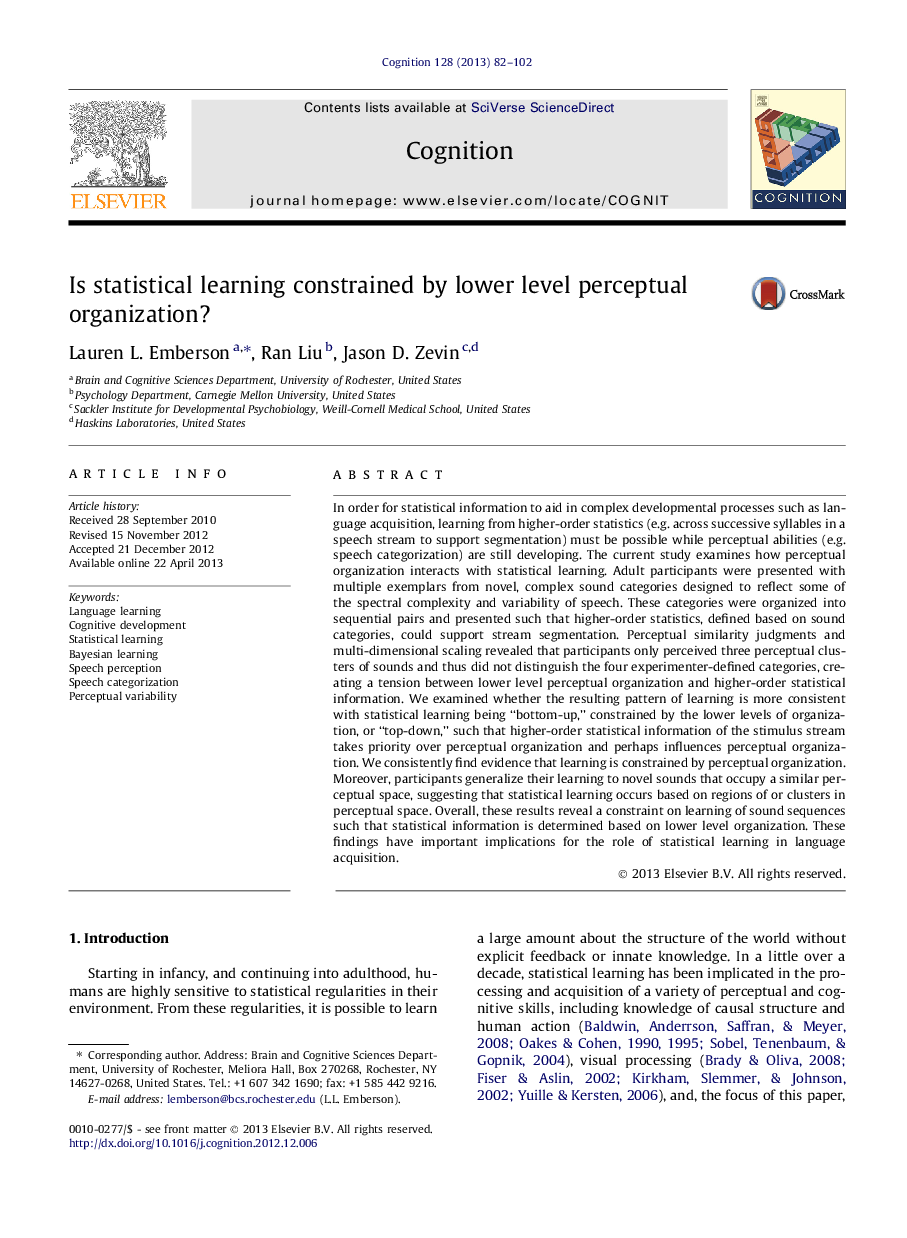| Article ID | Journal | Published Year | Pages | File Type |
|---|---|---|---|---|
| 926780 | Cognition | 2013 | 21 Pages |
In order for statistical information to aid in complex developmental processes such as language acquisition, learning from higher-order statistics (e.g. across successive syllables in a speech stream to support segmentation) must be possible while perceptual abilities (e.g. speech categorization) are still developing. The current study examines how perceptual organization interacts with statistical learning. Adult participants were presented with multiple exemplars from novel, complex sound categories designed to reflect some of the spectral complexity and variability of speech. These categories were organized into sequential pairs and presented such that higher-order statistics, defined based on sound categories, could support stream segmentation. Perceptual similarity judgments and multi-dimensional scaling revealed that participants only perceived three perceptual clusters of sounds and thus did not distinguish the four experimenter-defined categories, creating a tension between lower level perceptual organization and higher-order statistical information. We examined whether the resulting pattern of learning is more consistent with statistical learning being “bottom-up,” constrained by the lower levels of organization, or “top-down,” such that higher-order statistical information of the stimulus stream takes priority over perceptual organization and perhaps influences perceptual organization. We consistently find evidence that learning is constrained by perceptual organization. Moreover, participants generalize their learning to novel sounds that occupy a similar perceptual space, suggesting that statistical learning occurs based on regions of or clusters in perceptual space. Overall, these results reveal a constraint on learning of sound sequences such that statistical information is determined based on lower level organization. These findings have important implications for the role of statistical learning in language acquisition.
► Examined statistical learning of variable exemplars of novel sound categories. ► Listeners’ naïve perceptual organization of sound exemplars are measured. ► Bottom-up learning: determining statistics based on naïve perceptual organization. ► Top-down learning: learning based on most predictive higher-level statistics. ► Learning outcomes are consistent with a bottom-up model of statistical learning.
